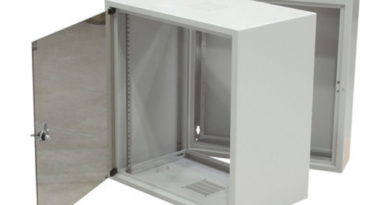Here Is What You Should Do For Your Industrial Cable
Industrial cable and wire is a type of electrical wiring used in industrial applications and machines. These cables and wires are designed to withstand harsh environments and high levels of electrical current. They are strong and durable and can be used in a variety of applications such as power, data, or communication networks. Industrial cables and wires are typically made of copper or aluminum, and come in a variety of sizes and types.
Features and Advantages
- Durability: Industrial cables are designed to withstand harsh environments and conditions. They are made with high-quality materials and can withstand extreme temperatures, high pressure, and wear and tear.
- Flexibility: Industrial cables are designed to be flexible, allowing them to be bent to fit into tight spaces and around obstacles. This makes them ideal for applications that require tight turns and complex pathways.
- Versatility: Industrial cables can be used in a variety of applications, from simple wiring to complex control systems.
- Safety: Industrial cables are designed to be safe and reliable. They are tested for safety and reliability to ensure that they can withstand the rigors of industrial use.
- Cost-effectiveness: Industrial cables are generally more cost-effective than other types of cables due to their durability and versatility.
Common Types of Industrial Cables
Control and Power Cables
These cables are used for industrial control and power systems, including motors, pumps, and electrical equipment. They are designed for durability and flexibility and typically feature multiple conductors, heavy insulation, and a wide temperature range.
Instrumentation Cables
These cables are used for a variety of industrial applications, including data collection, signal transmission, and control systems. They are designed for high signal integrity and often feature specialized shielding and grounding to reduce noise and interference.
High-Temperature Cables
These cables are designed for extreme temperatures and environments, such as those found in petrochemical, oil, and gas industries. They are designed to withstand temperatures up to 600°C and feature robust shielding and insulation to protect against fire and sparks.
Fiber Optic Cables
These cables are used for data transmission over long distances, such as in telecommunications and networking applications. They feature plastic or glass fibers that are designed to transmit data with little to no interference.
Coaxial Cables
These cables are used in a variety of industrial applications, such as television, radio, and satellite broadcasting. They feature an outer shielding layer and an inner conductor to reduce interference and improve signal quality.
Maintenance Rules for Industrial Cable and Wire
- Check for physical damage – Inspect the cable and wire for any signs of physical damage such as cuts, cracks, fraying, or exposed wires. Replace any damaged cables or wires immediately.
- Check for insulation – Make sure that the insulation on the cable or wire is intact. Look for any signs of wear or cracks in the insulation. Replace any damaged insulation immediately.
- Check for exposed wires – Make sure that there are no exposed wires on the cable or wire. Exposed wires can cause electrical shock and should be covered with insulation or tape.
- Check for proper tension – Make sure that the cable or wire is under the proper tension. Too much tension can cause damage to the cable or wire.
- Check for proper routing – Make sure that the cable or wire is routed properly. This will ensure that the cable or wire will not be damaged by other equipment or objects.
- Check for corrosion – Check for any signs of corrosion on the cable or wire. Corrosion can cause electrical problems and should be addressed immediately.
Choosing the Right Industrial Cables
When choosing industrial cables, it is important to consider the type of application and the environment in which they will be used. The key factors to consider include voltage, amperage, temperature rating, and type of cable. Additionally, certain cables may be required to meet specific safety and industry standards. Other factors that may influence the selection of a cable include flexibility, durability, and cost.
Installation
- Remove existing wiring and cables from the installation area, if any.
- Measure the area to determine the required length and quantity of cable needed.
- Select the type of cable to be installed.
- Cut the cables to the desired length, taking into account the minimum bend radius.
- Strip the outer jacket from the cables, leaving enough jacketing to protect the conductors.
- Install the cables in the applicable areas and route them to the desired destination.
- Connect the cables to the necessary terminals or junction boxes.
- Test the cables for continuity and other electrical issues.
- Secure the cables to the walls or structures using clips or other mounting hardware.
- Install the necessary plates or covers to protect the cables from damage and tampering.




